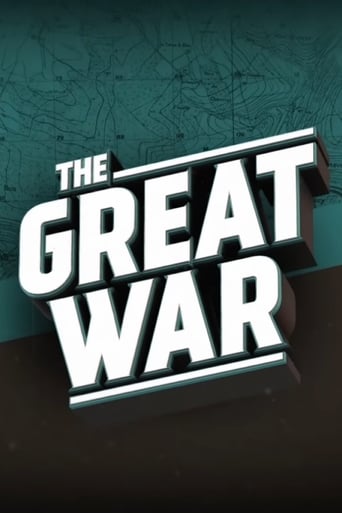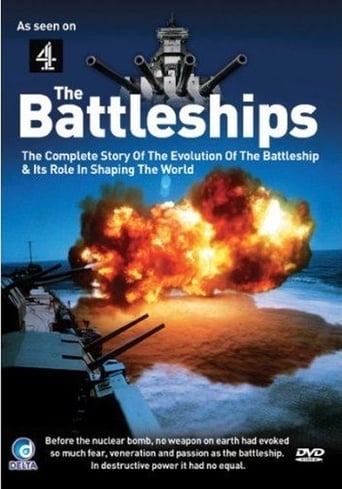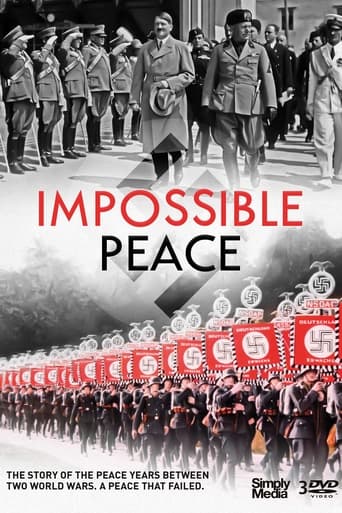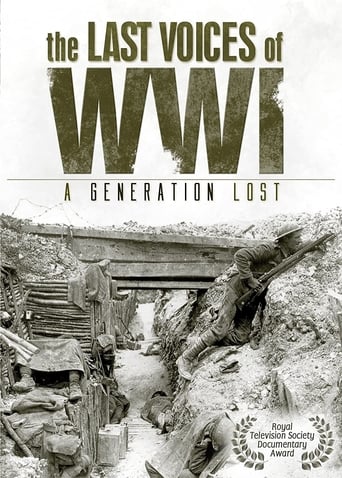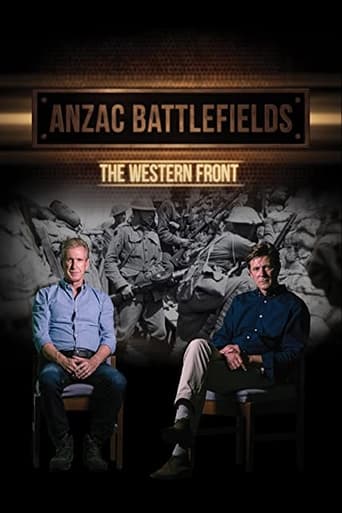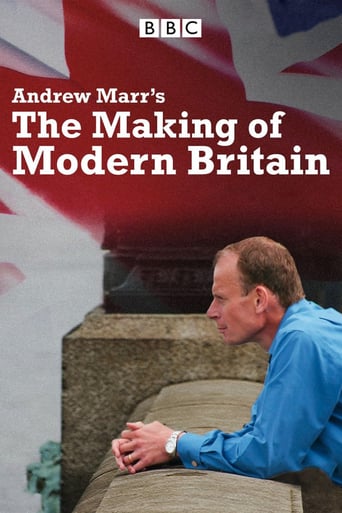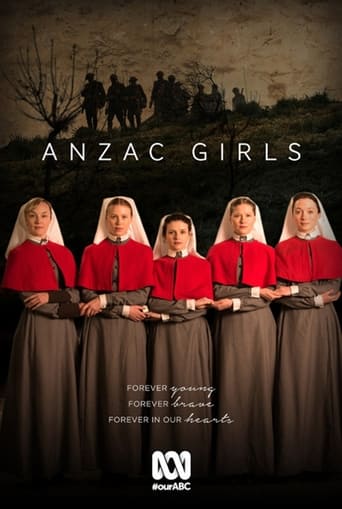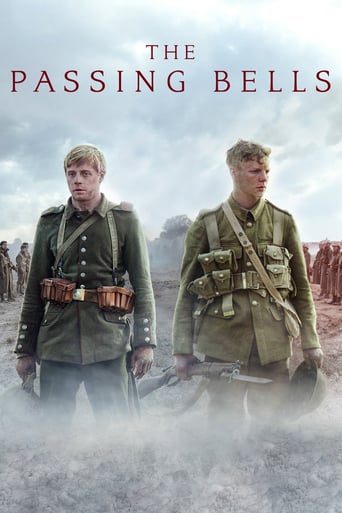With 30 Day Free Trial!
The Great War
2014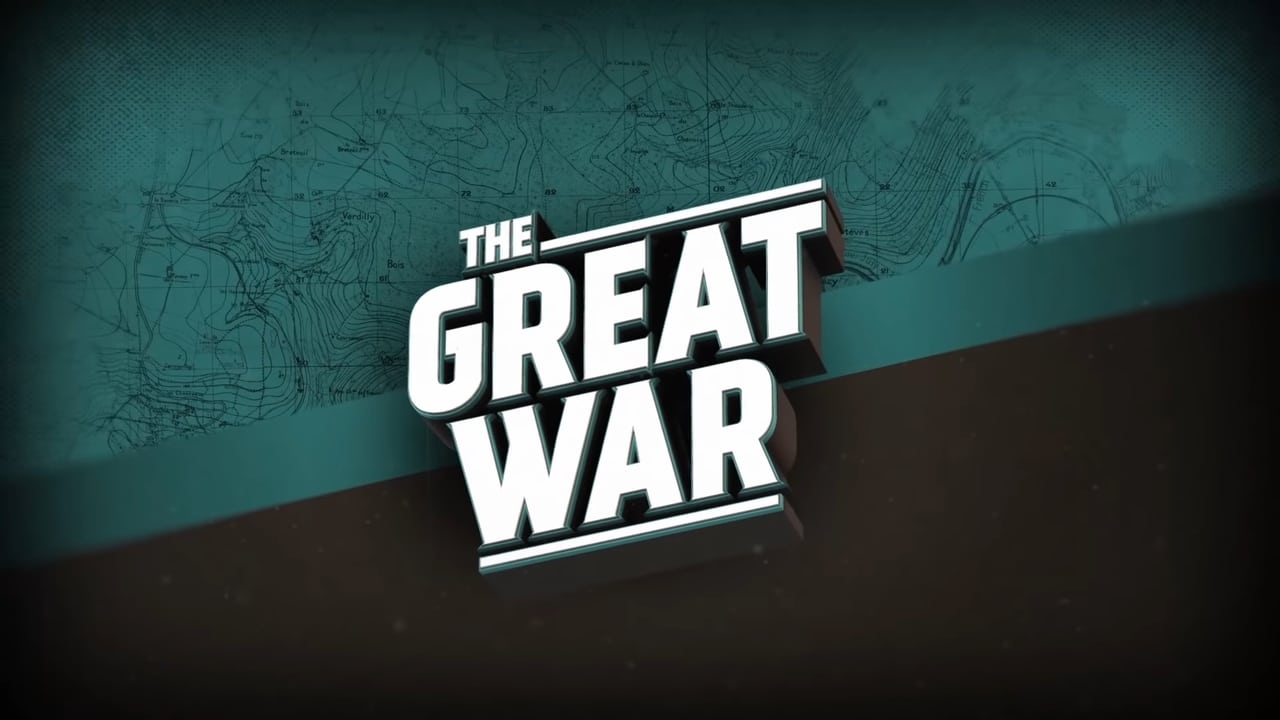
After the assassination of Austro-Hungarian Archduke Franz Ferdinand and the following events today known as the July Crisis, the European powers go to war. The Entente and the Central Powers mobilise their armies for a war that is supposed to be over by Christmas.
Watch Trailer
The Great War Season 1 Full Episode Guide
Right before Christmas the allied powers begin the Champagne offensive, which will last several months. In snow, mud,and under horrible living conditions not only the soldiers suffer. The images of a war fought with honour and glory are finally over as even the white flag is used for ambushes now. Far away in the mountains of the Caucasus, Russia and the Ottoman Empire are fighting a grim battle, too, in which many soldiers die during interminable marches in the snow wearing summer uniforms.
German admiral Franz von Hipper reluctantly carries out his orders to bomb British costal towns. And indeed, this attempt to intimidate British civilians only unites them. British propaganda gets another opportunity to portray Germans as bloodthirsty and brutal. Meanwhile, the French start a new offensive near Vimy on the Western Front.
Near the far away Falkland Islands the story of the German East Asia Squadron is coming to an end: in a naval battle nearly the entire squadron is sunk and Maximilian von Spee dies together with over 2000 German seamen. Meanwhile, the war of attrition is still going on in Europe and Austria-Hungary has to learn that their conquest of Belgrade is not putting a lid on the Serbian resistance.
During the first week of December, Austria manages to capture Belgrade. Thereby Austria is the first nation to achieve one of its war aims. The victorious Austrians are joyful, but the Serbs strike back and the Austrian euphoria takes a sudden end. Meanwhile, the Russians fight against the German and Austrian troops in front of Cracow. But the Austrians are able to stop the Russian offensive and achieve yet another victory.
Four months after the outbreak of the war, a new objective develops: the fight for the most valuable resources. The modern warfare and its war machines need one thing more than anything: Oil, iron, steel or cole can be a matter of life and death. The British advance into the Ottoman Empire and conquer the city Basra. Their goal is to secure their drilling facilities at the Arab Gulf. Meanwhile, the situation at the front is gridlocked, especially in the trenches on the Western Front.
The commanders of the German army blame each other for the missing victories. Erich von Falkenhayn and Paul von Hindenburg both believe that they have the only solution to the problem. The German emperor Wilhelm II feels more and more excluded when it comes to military decisions. His soldiers become pieces on a chessboard and the war of the 20th century also takes its toll on some of the best commanders of World War 1. The situation at the Western Front stays unaltered: the French and Germans fight each other between the trenches. On the contrary, at the Eastern Front the Russians and the Germans are battling in a heavy fight.
The German army dug in at the Western Front and waited for the next Russian attack at the Eastern Front. Even though the Germans outnumbered their opponents, they barely stood a chance against machine guns in No Man's Land. They realize: to defend a position is a lot easier than to attack and conquer. Especially while fighting near Ypres. At the Eastern Front, things are going better for Chief of Staff Ludendorff: he breaks through outstretched Siberian lines. At the same time, Russian soldiers are faced with a new enemy and start the Bergmann Offensive in today's East-Turkey.
Three months after the outbreak of the war, another world power enters the conflict: The Ottoman Empire. The Ottoman war minister Enver Pascha, a supporter of a new Turkish self confidence, wants to gain advantages for a future Turkey by declaring war. Meanwhile, another ship of the German East Asian Squadron is surprising the Royal Navy by sinking two of their ships near Coronel, Chile. Regardless, the battles on the Eastern Front, Western Front and in Serbia are continuing.
After some heavy casualties during the first months of war, the armies had to look for new recruits. While Great Britain undertook soldiers in military service to fill up their ranks, Germany was relying on reservists and inexperienced recruits. This fatal German mix was sent against smaller, but much more experienced British and French troops. The resulting carnage had no military effect, but was later on idolized by the German propaganda and is today known as the "Kindermord" (child murder) or Massacre of the Innocent.
The first weeks of war already took hundreds of thousands of lives and the daily struggle to survive in the trenches on the Western Front has nothing to do with the promised glory. Back home, propaganda is already working and grotesquely distorting the public's opinion about the war. While the British civilians feared a German invasion, some of the leading German scientists and intellectuals published the "Manifesto Of The 93" in which they rallied for solidarity with the Germans
After defeating the Russian Army in the early weeks of the war, the German and Austrian generals hope to push the Russians back with combined forces. But, like Napoleon 100 years earlier, they underestimate their enemy and his tactics and so the tides are turning on the Eastern Front. On the Western Front, the last frontline gaps are closed and the British army is entering a small town called Ypres, which will eventually be the symbol for the carnage in Flanders for the next four years.
In the trenches on the Western Front and in the mud on the Eastern Front, hundreds of thousands of soldiers die and with them dies the illusion of a short war. After heavy casualties, the armies are adapting to a longer conflict and are looking for new recruits. To convince them to fight they are taking advantage of national minorities and their hope of equal rights and self-determination.
he autumn rain turns the battlefields into muddy landscapes. Mud in which the soldiers are hardly able to dig trenches and in which no artillery gun will stand. The first change of seasons is proving to be a big new challenge for the armies in Europe. While at the time, the longest siege of the war is starting, we can also see the first major African battles of World War 1.
parked by the desperate state of the Austrians, the Russian army goes on the offensive. General Ivanov even tries to use his numerical superiority to make up for the German victories a few weeks ago. Meanwhile, the armies of the Western Front try to outflank each other as they race north to the sea. And in the North Sea itself, submarine warfare really gets going while in the air, we see airplanes used in large military operations for the first time in history.
After the advances and retreats during the early weeks of war, the front is coming to a grinding hold after the Battle of the Aisne. The German Army is digging itself in on one side of the river and a new, horrible chapter of World War One begins: trench warfare. To be prepared for this new kind of war, the British Army is recruiting over 400.000 soldiers still believing that the war will be over by Christmas.
The German Army is so close to Paris that French soldiers are brought to the front by taxis. Together with the British Expeditionary Forces, the French are fighting the German advance near the Marne river. Meanwhile, the Austro-Hungarian army is retreating to the Carpathian Mountains after a catastrophic defeat against Russia with hundreds of thousands of casualties.
While the Germans on the Western Front are very close to reaching Paris, the Eastern Front proves to become a disastrous failure for the Austro-Hungarian forces. Conrad von Hötzendorf overestimated his skills and the strength of his troops. And after his too complicated plan in Galicia failed, the town of Lemberg falls into the hands of the Russians. Meanwhile, the war starts spreading into Asia, as Japan is besieging Tsingtao and New Zealand conquers German Samoa.
During their advance through Belgium, the German Army is committing atrocities against Belgian civilians - justified as response to resistance and sabotage against their advancement. The Austro-Hungarian Army is perpetrating massacres against the Serbian civilian population to retaliate against Serbian guerrilla warfare. At the Eastern Front, German generals Hindenburg and Ludendorff succeed in one of the most important battles of World War I: The Battle of Tannenberg.
In the early days of World War 1, warfare is still based on ideas and ideals of 19th century generals. The technological progress during industrialisation clashes with obsolete war tactics (Plan XVII). Tens of thousands of soldiers lose their lives in carnage at the Western Front. The French Army marches into battle in bright uniforms, where the German Army awaits them with machine guns. Artillery already shows how brutal and effective it's going to be during the rest of World War 1.
The first few days of war were a combination of failed organisation and chaos. The Austro-Hungarian supreme command lacks combat experience, and their irrational actions in Serbia are causing turmoil among the Germans. At the Eastern and Western Front, early signs of problems can be seen, too, which the armies will pay a terrible price for, in the upcoming weeks.
Austria-Hungary starts the bombardment of Belgrade. What follows is a deployment race of armies between all major powers in Europe. Nobody wants to be unprepared in case of an attack. Germany is implementing the Schlieffen-Plan. The idea is to avoid a two front war by conquering Paris via Belgium. After that the full attention would be diverted to Russia. One thing gets clear in the first days at the Western Front: This war is going to be different - this was modern warfare.
After the assassination of Franz Ferdinand, Austria-Hungary is determined to put a lid on Serbia once and for all. Germany wanted to go to war with Russia sooner than later, because it was a afraid of a strong Tsar Nicholas II. In the first episode, Indy explains how the various European conflicts spiralled into a world war.
Free Trial Channels
Seasons


